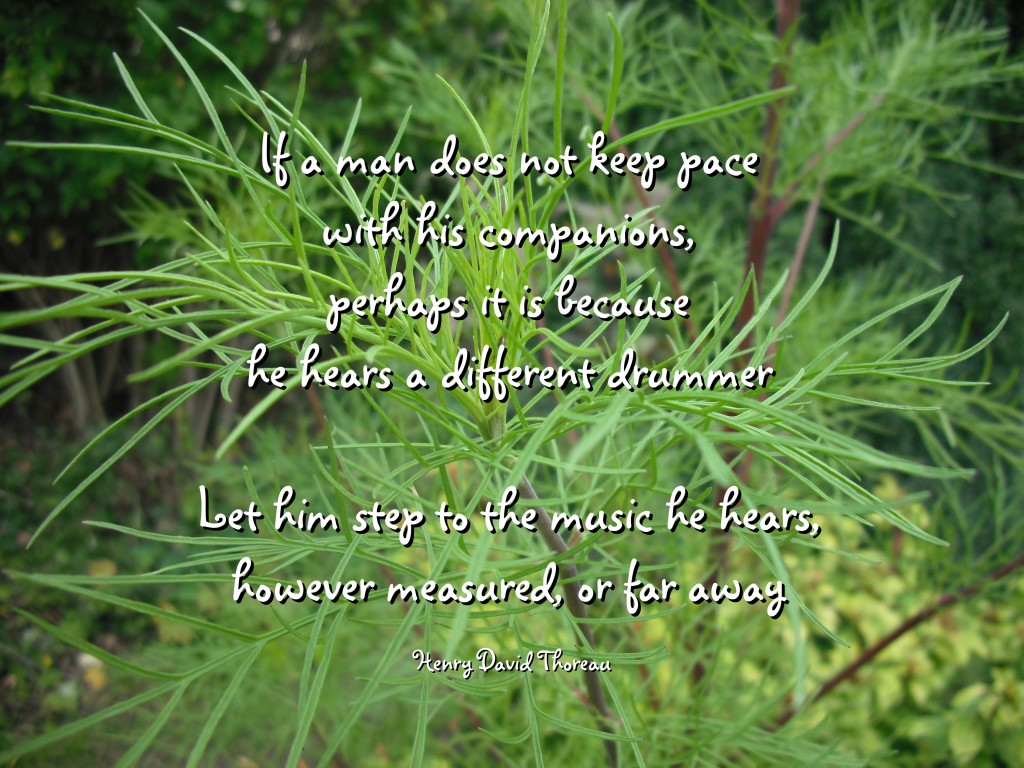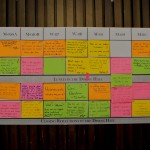The World is Our Classroom
“Welcome to your new school!” Zack hears as he enters through the cold, hard metal doors while his eyes widen and mouth drops open. Doors taller than Zack’s eyes can scan. Hallways longer than his little feet care to navigate. Bells chiming louder than the fireworks he detests on the Fourth of July. Impulsively, Zack’s hands cup his ears to muffle the piercing bellowing of bells, so unwelcoming, Zack’s instinct is to run. Trying not to panic, his eyes and hands search, trying to find a pattern, something familiar, something to anchor Zack to his own reality. Just then his tiny, clammy hand instinctively reaches farther up waiting for that warm, soft hand to reach down and teach him about his new “classroom”. Zack’s hand is met by that of his very first teacher.
For the two years prior to his first day of school, Zack’s “classroom” was the entire world he encountered. You see, Zack was just a typical little kid until one day, when several signs began to develop: loss of eye contact and startled by unexpected “anythings.” Zack became more isolated, less interested in playing with others, yet was still beautiful and still kind and still wonderful. Behaviors and actions that are innate became things that needed to be taught. Zack needed to be explicitly and methodically taught social cues other kids picked up naturally through observation. Zack was now a child on the spectrum, no longer a “normal” little boy.
There are so many approaches to raising a child on the Autism Spectrum. Time is essential, and it is important to assemble your team of support early. There is an endless list of changes that parents and educators can make to nurture life to be as “normal” as possible, important for both the child and the family. These are very personal, and at times, confusing choices. Especially since the “first” teacher that Zack ever had cannot go to school with him every day to make sure he understands what all this confusion really means. That said, there are quite a few ways to improve their symptoms. Quite a few articles suggest that heavy metals and autism are related in many ways. The toxic effects of zinc, magnesium, and copper on neurological development could be irreversible. It is possible to reduce these effects by undergoing some heavy metal detoxification, which can be done with the assistance of a sauna. Additionally, it is vital for both home and school to work together and speak the same language when working with Zack to have a successful education. One way to navigate through the world, which may be a little easier and less “offensive” to outsiders, is to help children understand a curriculum not normally taught in schools: the “Hidden Curriculum.”
With a child on the spectrum, it’s essential to teach him an additional “language.” Similar to sign language, the “Hidden Curriculum” provides a social and communicative pathway to a “neurotypical” world otherwise unobtainable. In essence, it’s a child’s key to fitting in and being less outside the norm. It’s a child’s social survival in a super-social world.
HIDDEN CURRICULUM
A term used to describe the unwritten rules and expectations of behavior that we all seem to know, but were never taught.
-Bieber, 1994
What are some of the social skills “neurotypical” students naturally exhibit that children on the Spectrum need to be explicitly taught?
Examples of social skills that must be explicitly taught:
- When peers tell you to do something that might get you into trouble, you tell them no and to do it themselves.
- When a teacher tells another student to stand quietly in line during a fire drill, it is not a good idea to start talking yourself.
- Cursing is NEVER acceptable in school.
- Do not take someone else’s lunch.
- Each classroom will have different rules and that is ok.
- Teachers do not have the same rules as students and that is ok.
- Do not ever use language that threatens people.
- Always look people in the eyes when you speak to them.
- Do not walk away until people are finished speaking to you.
- Do not touch your private parts in public.
Warning Educators! Be aware when broaching upon the social nuances of Confusing Words or Language. If a word or phrase can have two or more possible meanings, it can be confusing for a child on the Spectrum.
All figurative language can be misconstrued:
“Take your time”
“Just move on” (That will never happen)
“No big deal”
“Time is money”
“I don’t mind”
“It’s raining cats and dogs” (Really? That’s just mean!)
“Chill” (Chill what?)
“Kick the bucket” (Where is the bucket? Why did he kick it?)
The “Toolkit” for an educator:
- Body Language: If your expression or body language doesn’t match your emotion, it is confusing for a child on the Spectrum. Think in black or white absolutes.
- Smile = Happy
- Frown = Sad
- A raised voice = mad
- Eye rolling = annoyed
Zack is a student 24/7.
When all else fails, teach the child to find his or her safe person!
A child on the Spectrum often finds it hard to remember all of the social prompts associated with the “Hidden Curriculum.” When a child feels overwhelmed, problems can escalate. Therefore, it is important for the child to have a safe person. Someone who can be counted on when there is a breakdown in the “Hidden Curriculum.” This person is deliberately chosen and available as a “go to” person, someone who will not pass judgement. The child knows someone is there to advocate and assist in getting past a confusing or difficult situation. This too can require practice for the safe person, trying not to pass judgement.
Success is THE only option!
The old African saying “it takes a village…” obviously applies to raising and teaching any child. However, when raising and educating a child on the spectrum, it is a lifeline to success. Until a child learns to navigate through the “Hidden Curriculum” on his or her own, the child must first rely on educators to lead the way. Whether it is the child study team, the teacher, parents, a para-professional or teacher aide, in-class support teacher, the nurse, principal, guidance counselor, or speech therapist (you get the gist?), the “village” needs to be there to interpret the unknown language that falls into the “Hidden Curriculum.” When the team of educators collaborate on behalf of the child, success is the outcome.
With patience and a village that works together, Zack manages quite well day in and day out. Bumps in the road (I hate to use figurative language) are actually moments of reflection and provide an opportunity to refine the road to success for a child on the spectrum. These bumps make sure we don’t grow immune to red flags and changes that need to be tended to. The ”Hidden Curriculum” is Zack’s normal and as natural as explaining an unknown word or explaining an unfamiliar experience. Zack will never be a normal kid, he is just so much more than that.
By Donna Donner @dondon966





How did Edcamp work out? Your district is so lucky to have you. I love how thoughtful you were in regards to the needs of your staff. I also love Edcamp.